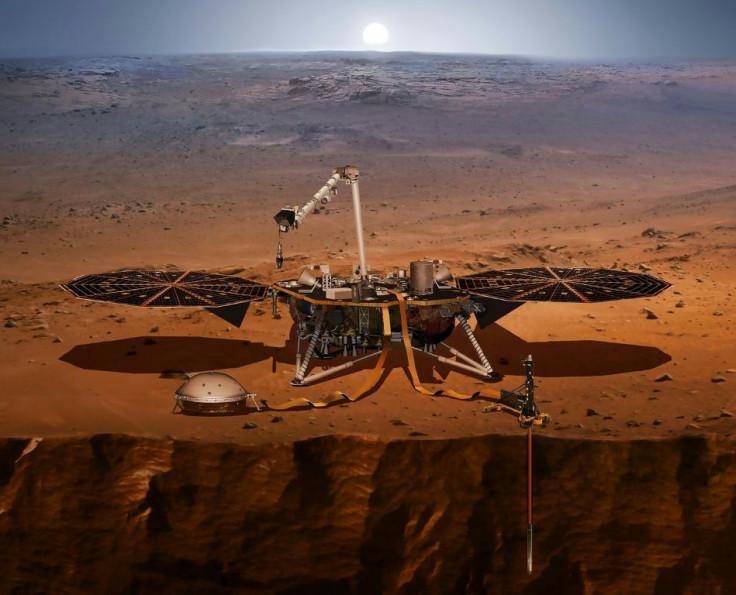NASA Mars Mission Success: Alien Life May Be Hiding In These Spots

Enthusiasts looking for life on the Red Planet might have a new clue as to where to start their search. Thanks to the proposed mission of the upcoming Mars 2020 rover, and in part to the Compact Reconnaissance Imaging Spectrometer (CRISM) camera, we now have a better idea of which spots on Mars could indicate that life did exist there in previous millennia.
According to a report, the NASA Mars 2020 rover is slated to make a landing near the Jezero crater in Mars’ northern hemisphere. This crater is a dried-up lake that could potentially be a hotbed of life according to data obtained from CRISM. This is because the camera was able to identify the presence of two very specific minerals that could hold evidence of life: carbonate and hydrated silica.
Carbonate is basically the mineralization of carbon dioxide after it interacts with water and rock. This mineral has been known to house some of the oldest fossils in history, at least on planet earth. Some of the fossils found encased in carbonite appear to be as old as 3 billion years, or more.
This mineral has been found in concentrated quantities around the inner rim of Jezero crater. This is also where the shoreline of the lake is thought to have previously reached back when water was still present on the planet and has been referred to by scientists as the ‘bathtub ring’ of the crater.
Should there be any evidence of life to be found, this sedimentation is likely to be one of the spots that should be checked, and that’s one of the missions of the Mars 2020 rover.
Hydrated silica, on the other hand, is more widely known as the mineraloid opal. This mineraloid can be formed by sedimentation of materials on the seafloor, and can also serve to encase fossils as efficiently as carbonite.
The CRISM camera was able to identify concentrations of opal on the delta of the river that fed Jezera crater previously, and the Mars 2020 team hopes to find sediments with traces of fossils in these materials as well.
“Jezero Crater is an incredibly mineralogically diverse place, with lots of paths forward to search for biosignatures,” Briony Horgan, a planetary scientist at Purdue University, said. “[This] means we have a lot of chances to understand exactly what happened with the history of life here.”
© Copyright IBTimes 2025. All rights reserved.





















